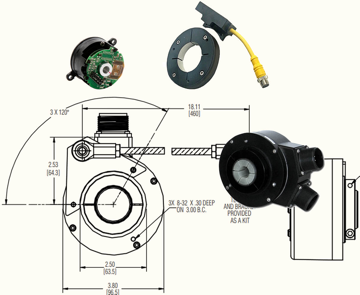Case ground conductor are the preferred grounding method for encoders. The function of the case ground differs from the cable shield, which also makes contact with the encoder connector.
The case ground conductor attaches to an isolated trace on the PCB which is connected to a mounting screw. The mounting screw is attached to the base of the encoder, creating an electrical connection from the housing to the case ground pin. Any noise that couples onto the housing can be drained to ground through the case connection rather than radiating into the encoder.
It is recommended to ground the encoder system at the Drive/PLC end. Grounding at both ends can result in ground loops, increasing the noise. However, if the tether is not isolated, the system can be grounded at the motor end to eliminate the case ground connection. This method of connecting the encoder housing to the motor may not be the right solution for applications that are very noisy.
Any noise that hits the shield through the cable is drained by the encoder shield connection. However, noise can seap through any holes that exist in the housing and shield combination. In the case that the cable shield is attached to the connector, a case connection would be unnecessary because it is redundant the the shield.
